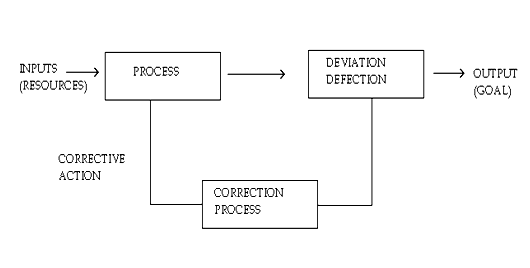Taking Corrective Action
Corrective actions are called for when performance fails to meet the standards set for it. Corrective action may involve a very simple act, such as adjusting a machine or giving an employee a demonstration on how to use a particular machine. It may also be very complicated, like turning around an unprofitable organization.
Corrective actions also vary in the time required to effect them. Routine malfunction may be corrected immediately. But complex problems may require months or even years to rectify.
Prescribed vs Judgmental Corrective Action
Prescribed corrective action is a predetermined action in company rules, procedures and policies. Despite the best efforts of the management, some problems are certain to recur. To save time and money and reduce frustration, managers should develop plans with built-in corrective action to deal with common problems such as absenteeism, machine breakdowns, and unsatisfactory performance.
Prescribed corrective action in the form of carefully prepared procedures is also needed to cover emergencies, even though these situations are unlikely to occur. An organization may have a procedure to follow in case of fire.
Much as the remedial action that is required at lower levels of management can be prescribed, judge-mental plans become increasingly important in deciding how to correct what has gone wrong at higher levels of the organization. Judge-mental remedial action is not spelt out in predetermined rules, procedures or policies. It is based on the experience, knowledge, and wisdom of the manager who decide what remedial action is needed.
Where judgement is concerned, there is no manual available to provide solutions. Instead managers must rely on experience, observations of problems in similar firms were solved, opinions of other managers, and the "feel" of the situation to develop appropriate corrective action. Unlike prescribed corrective action, judgement problem solving permits considerable latitude (flexibility).
Guidelines for Taking Corrective Action
The following guidelines are useful in making corrective action effective:
1. Deal with problems, not symptoms—Managers should search for the fundamental problem and not base remedial action on symptoms. Lack of motivation is usually not the real problem. It is only a symptom of one or more underlying problems. It may be caused by ineffective supervision, poor working conditions, or some other problem.
2. Be prompt in taking corrective action—A common error in managing is failure to take corrective action promptly when standards are not met. Managers should be encouraged to take corrective action quickly. The old saying "A stitch in time saves nine" holds for most situations encountered in managing.
3. Whenever possible, build corrective action into existing plans—Ideally plans (rules, procedures, policies and strategies) should have built into them the appropriate action to take if something goes wrong. Prescribed correction saves time and is efficient. However, major problems in an organization usually have no prescribed solutions and require considerable use of judgement.
4. Consider Constraints—Managers should bear in mind that various environmental constraints limit the problem-solving actions that managers may take. Good managers ask questions such as "What are the legal implications of what I want to do?" "How will the competitors react to this strategy?"
